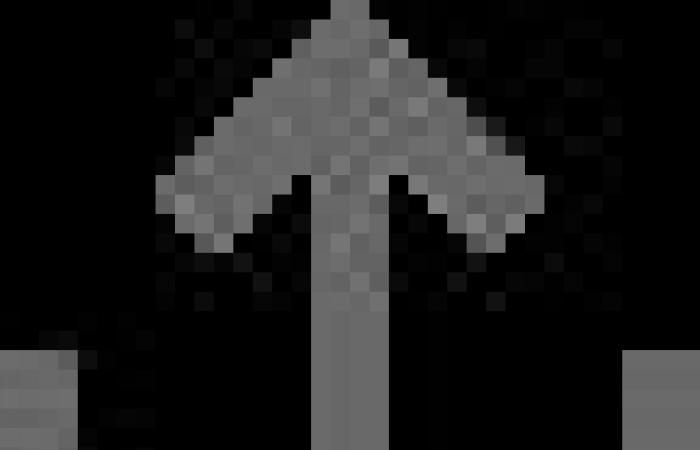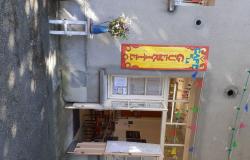The Israeli army carried out deadly bombings on several sectors of the Gaza Strip on Tuesday, the most violent having hit the town of Rafah in the south of the Palestinian territory devastated by more than eight months of war.
Posted at 6:43 a.m.
Updated at 9:18 a.m.
What there is to know
- Israeli military intelligence was aware shortly before October 7 of a planned Hamas attack whose aim was to take several hundred hostages in Israel, according to Israeli public broadcaster Kan;
- Thirteen Palestinians died in Israeli bombings on the Nousseirat camp;
- A daily break from 5 a.m. to 12 p.m. Eastern time to facilitate the delivery of badly needed aid to Gazans has been announced;
- The break concerns a road section of around ten kilometers going from the Kerem Shalom crossing, at the southern end of Israel, to the European Hospital in Rafah, a little further north;
- The Israeli army said its operations would not cease;
- The war led to the opening of a front on the Israeli-Lebanese border, where exchanges of fire intensified between Lebanese Hezbollah, an ally of Hamas, and the Israeli army;
- ” All ! NOW ! », chanted Monday evening thousands of Israelis gathered near the residence of Benjamin Netanyahu and the seat of Parliament in Jerusalem, to call for a ceasefire which would allow the release of the hostages.
Although Israeli strikes and fighting have decreased in intensity since Sunday’s announcement of a humanitarian pause in one area of Gaza, the Health Ministry of the Hamas-led Gaza government reported at least 25 people killed in the last 24 hours in bombings.
Reiterating their call for early elections in Israel, thousands of Israelis demonstrated Monday evening against the conduct of the war by the government of Benjamin Netanyahu and in favor of a ceasefire which would allow the release of the hostages still being held in Gaza.
The latter were kidnapped during an unprecedented Hamas attack on Israel on October 7 which sparked the war, with Benjamin Netanyahu vowing to destroy the Palestinian Islamist movement in power in Gaza since 2007.
All night long, the sound of explosions was heard in Rafah, the target of intense artillery fire, according to an AFP correspondent on site. Clashes broke out between Palestinian fighters and soldiers in several neighborhoods.
In the center of the Palestinian territory, where some 2.4 million inhabitants are besieged by the Israeli army, 13 Palestinians were removed before dawn from the rubble of two homes hit by Israeli strikes in Nousseirat (center), indicated the local Civil Defense.
Shells and raids targeted the al-Bureij refugee camp, Deir al-Balah (center) and Gaza City (north), according to witnesses.
Intelligence in the know?
On October 7, Hamas commandos infiltrated from Gaza in southern Israel carried out an attack which resulted in the death of 1,194 people, the majority civilians, according to an AFP count established from official Israeli data.
Of 251 people kidnapped, 116 are still held hostage in Gaza, of whom 41 are dead, according to the army.
In response, the Israeli army launched a large-scale offensive on the small, overpopulated territory of Gaza that has so far left 37,372 people dead, most of them civilians, according to data from the Gaza government’s health ministry. led by Hamas, a movement considered terrorist by the European Union and the United States.
According to Israeli public broadcaster Kan, Israeli military intelligence officials were aware of a September 19 report by eavesdropping unit 8200 detailing a planned Hamas attack aimed at taking several hundred hostages in Israel.
Despite the multiple efforts and pressures from the international community, including the United States, an ally of Israel, to cease hostilities, the prospect of a ceasefire seems distant, with the protagonists sticking to their positions.
Mr. Netanyahu wants to continue the war until the total defeat of Hamas and the release of all hostages, while the Palestinian movement demands a permanent ceasefire and a total Israeli withdrawal from Gaza. A truce plan announced on May 31 by President Joe Biden has remained a dead letter until then.
According to a senior Israeli official who requested anonymity, “dozens” of hostages held in Gaza are alive. “We can’t leave them there for long, they will die. »
” All ! NOW ! », chanted Monday evening thousands of Israelis gathered near the residence of Benjamin Netanyahu and the seat of Parliament in Jerusalem, to call for a ceasefire which would allow the release of the hostages.
PHOTO OHAD ZWIGENBERG, ASSOCIATED PRESS
“Serious situation”
On Sunday, the army announced until further notice a daily break “from 8 a.m. to 7 p.m.” (5 a.m. to 12 p.m. Eastern time) in order to facilitate the delivery of aid which Gazans have sorely needed. need.
The break concerns a road section of around ten km going from the Kerem Shalom crossing, at the southern end of Israel, to the European Hospital in Rafah, a little further north.
Kerem Shalom is currently the only route for the transfer of aid into the Palestinian territory threatened by famine according to the UN.
It has not reported any aid delivery or distribution operations in Gaza since the announcement of the pause. AFP images show aid being loaded into trucks in Kerem Shalom.
The war led to the opening of a front on the Israeli-Lebanese border, where exchanges of fire intensified between Lebanese Hezbollah, an ally of Hamas, and the Israeli army.
Arriving in Beirut after a trip to Jerusalem, Joe Biden’s emissary, Amos Hochstein, deemed a de-escalation between Israel and Hezbollah “urgent”, speaking of a “serious situation”. The United States wants to avoid “a full-scale war,” he said.







